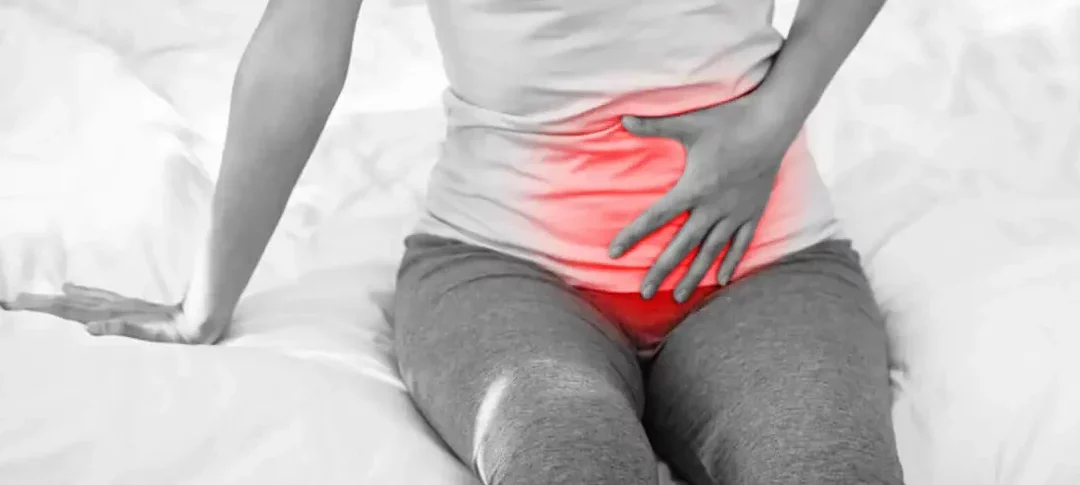The pelvic floor is a group of muscles and tissues located at the bottom of the pelvis. These muscles support your bladder, bowel, and reproductive organs. They play a crucial role in maintaining urinary and fecal continence, sexual function, and overall stability of the body.
Pelvic floor muscle spasms occur when these muscles contract involuntarily and do not relax properly. Pelvic floor muscle spasms can significantly impact a person’s quality of life. They can cause discomfort and pain and disrupt daily activities such as going to the bathroom or having sexual intercourse. In some cases, severe pelvic floor muscle spasms may lead to urinary or fecal incontinence.
The constant tension and tightness in the pelvic floor muscles can also cause referred pain in other areas of the body, such as the lower back, hips, and thighs. Neuragenex Neurofunctional Pain Management (NFPM) can treat chronic pain and inflammation associated with pelvic floor muscle spasms as well as some of the underlying neurological factors that can contribute to those spasms.
How Pelvic Muscle Spasms Feel
The symptoms of pelvic muscle spasms may vary from person to person. However, there are some common signs and symptoms that can help identify if someone is experiencing pelvic floor muscle spasms:
- Pain and discomfort: The most common symptom of pelvic floor muscle spasms is pain in the pelvic region. This pain may be sharp, dull, or achy, ranging from mild to severe. This pain can occur during or after activities such as sitting, standing, walking, and sexual intercourse.
- Burning sensation while urinating: The pelvic floor muscles are responsible for controlling the bladder, and when they are tight and spasming, it can cause a burning sensation while urinating.
- Frequent urge to urinate: Pelvic muscle spasms can also cause an increased urge to urinate, even when the bladder is not full. This frequent urge can be uncomfortable and disruptive to daily activities.
- Bowel dysfunction: Like the bladder, the pelvic floor muscles also control bowel movements. Pelvic muscle spasms can cause constipation or difficulty passing stools.
Factors Contributing To Spasms In The Pelvic Muscles
Several factors can contribute to the development of pelvic muscle spasms. These include:
- Injury: An injury to the pelvic area, such as a fall or complications caused by surgery, can lead to muscle spasms.
- Trauma: Physical or emotional trauma can cause the pelvic muscles to tighten and spasm as a protective response. For instance, childbirth can sometimes cause trauma to the pelvic area and result in muscle spasms.
- Nerve damage: Nerve damage in the pelvic region can disrupt the signals being sent to and from the muscles, causing spasms.
Possible Health Conditions Linked To Pelvic Floor Discomfort
Sometimes, pelvic floor muscle spasms result from an underlying health condition. The following are some of the medical conditions that can cause pelvic floor spasms:
Irritable Bowel Syndrome
Irritable bowel syndrome (IBS) is a common digestive disorder that affects the large intestine. Symptoms can include bloating, abdominal pain, constipation, and diarrhea. People with IBS may also experience pelvic muscle spasms. This can happen because the muscles in the pelvic floor and the digestive tract are connected. When one is affected, it can cause issues in the other.
Endometriosis
Endometriosis is a condition in which the tissue lining the inside of the uterus begins growing outside of it, typically on other pelvic organs, such as the ovaries. It’s believed that the pressure and irritation from the excess tissue can cause surrounding muscles to tighten and spasm, leading to pain and discomfort.
Chronic Pelvic Pain Syndrome
What is chronic pelvic pain syndrome? It’s a type of pelvic pain that lasts more than six months and may not have a known cause. Pelvic floor muscle spasms can contribute to this condition, making the pain worse. It’s a complex mechanism, but some theories suggest that chronic pain in the pelvic region can cause the muscles to become tight and overactive. This constant tension and spasm, in turn, lead to even more pain.
Diagnosing And Seeking Medical Attention
If you are suffering from pelvic floor muscle spasms and any of the above symptoms, you should see a doctor for proper diagnosis and treatment. Your doctor may perform a pelvic exam, review your medical history, and possibly conduct imaging tests (such as an MRI) to determine if any underlying conditions are causing the muscle spasms.
It’s important not to ignore chronic pain in the pelvic area as it can greatly affect your well-being and quality of life. The symptoms you’re experiencing may indicate an underlying health condition, and seeking medical attention can help identify the cause and provide appropriate treatment, including pelvic floor physical therapy, medication, or surgery.
Conventional Treatment Options
Most doctors will recommend one or more of the following conventional treatment options depending on the diagnosis and the severity of the symptoms you’re experiencing.
Medications
As far as conventional treatment goes, over-the-counter (OTC) or prescription medications are often recommended to help ease the pain and discomfort associated with pelvic muscle spasms.
The following are some medications that can be used to temporarily relieve pelvic floor muscle spasms and pain; however, these solutions won’t address the underlying condition. Additionally, there are some potential risks and side effects that are associated with long-term use of these medications.
- Muscle relaxants: Muscle relaxants are prescribed to help reduce muscle spasms and relieve pain. Some commonly prescribed muscle relaxants include cyclobenzaprine, baclofen, and diazepam.
- Anti-inflammatory drugs: Nonsteroidal anti-inflammatory drugs (NSAIDs) can help reduce inflammation and relieve pain associated with pelvic muscle spasms.
- Pain relievers: OTC or prescription pain medication can help manage the discomfort associated with pelvic floor muscle spasms. Common options include ibuprofen, acetaminophen, and aspirin.
- Antidepressants: In some cases, antidepressants may be prescribed to help relax the pelvic muscles and alleviate pain. This is because some antidepressants contain serotonin, which can help regulate muscle contractions.
Pelvic Floor Injections
Another conventional treatment option for pelvic muscle spasms is injecting medications directly into the affected muscles. This can help reduce pain and inflammation but may also carry some risks, such as infection or allergic reactions. One of the most common medications used in pelvic floor injections is Botox, which temporarily paralyzes the muscles and prevents muscle spasms. Another option is steroid injections, which can reduce inflammation and pain in the affected area.
Nerve Stimulation
Electrical nerve stimulation is a treatment option that involves placing small electrodes on the skin near the affected muscles and using electrical pulses to stimulate them. This can help relax tight or spasming muscles and provide relief from pain by disrupting the pain signals sent to the brain. It’s a non-invasive and relatively safe treatment option.
TENS (transcutaneous electrical nerve stimulation) and SNS (sacral nerve stimulation) are two types of nerve stimulation commonly used to treat pelvic floor muscle spasms. However, some of these e-stim treatments have low pulse rates, which means that they’re better suited for short-term relief. Neuragenex NFPM uses electroanalgesia instead, which has a much higher pulse rate and is much better suited for providing long-term pain relief.
Neurofunctional Pain Management To Manage Pelvic Floor Discomfort
We use a Neurofunctional Pain Management approach to treating chronic pain caused by pelvic floor muscle spasms. This whole-person approach differs from a lot of conventional treatments in that it focuses on addressing the neurological factors contributing to the pain. Additionally, our treatment modalities are drug-free, non-invasive, non-chiropractic, and non-surgical solutions for long-term relief from chronic pain and inflammation. These treatments include:
Electroanalgesia
Electroanalgesia is a pain management technique that uses high-pulse electrical current to ease pain, boost blood circulation, improve mobility, and induce...
IV Therapy
IV nutritional therapy, or intravenous therapy, involves administering vital nutrients directly to the bloodstream through an IV. This type of treatment bypasses the digestive system, allowing for maximum absorption and utilization of nutrients by the...
Lifestyle Counseling
Lifestyle counseling is an approach to managing chronic pain that involves identifying, assessing, and modifying lifestyle factors contributing to an individual's pain. For example, lifestyle factors such as nutrition, physical activity, stress, sleep quality...
Read More About Muscle Spasm Pelvic Floor Lifestyle Counseling
Pain Relief For Conditions Causing Pelvic Floor Muscle Spasms
Neuragenex NFPM protocol focuses on providing relief from pain and inflammation. Because we take a neurological approach to treating chronic pain, our treatment options can provide relief for various conditions that can cause pelvic floor muscle spasms. These include:

Pelvic Floor Muscle Spasm-Induced Pain Treatment
Pelvic floor muscle spasms are a leading cause of urinary incontinence - a condition that can have a devastating impact on your life, cause embarrassment, and prevent you from enjoying even the simplest of daily activities, such as walking or...

Irritable Bowel Syndrome Pain Treatment
Irritable Bowel Syndrome (IBS) is a common condition that affects the stomach, intestines, and digestive system. Although sometimes mild, the chronic disorder can cause painful cramps and bloating, which can be incredibly disruptive for those...

Endometriosis Pain Treatment
Endometriosis is a condition that can cause severe and chronic pelvic pain, heavy menstrual bleeding, and other uncomfortable symptoms. Pain caused by endometriosis can be debilitating and may prevent you from living a full, active life. Fortunately, we offer...

Interstitial Cystitis Pain Treatment
Interstitial cystitis (IC) is a chronic medical condition that causes persistent bladder and pelvic pain. Fortunately, our protocol can help to relieve the pain associated with IC. With our non-invasive and non-chiropractic solution, you can experience...

Fibromyalgia Pain Treatment
Fibromyalgia is a chronic disorder that causes several symptoms, including widespread pain, fatigue, and cognitive impairment. Our non-surgical and drug-free treatments can help reduce the chronic pain associated with fibromyalgia. Additionally, our holistic...
Escape The Struggle Of Pelvic Floor Pain
Don’t let chronic pelvic floor pain affect your quality of life any longer. If you’re tired of relying on conventional treatments that only offer short-term relief, it’s time to consider a Neurofunctional Pain Management approach. Neuragenex NFPM protocol can provide long-term relief by addressing the neurological factors contributing to your pelvic floor muscle spasms and pain.
Ready to find relief from pain caused by pelvic floor muscle spasms?




